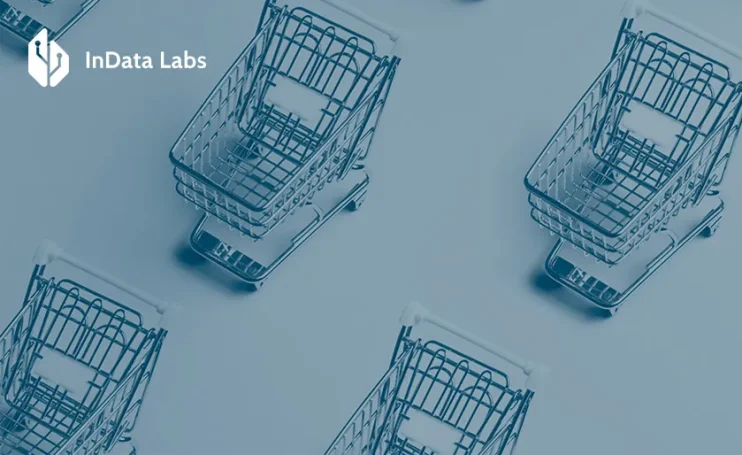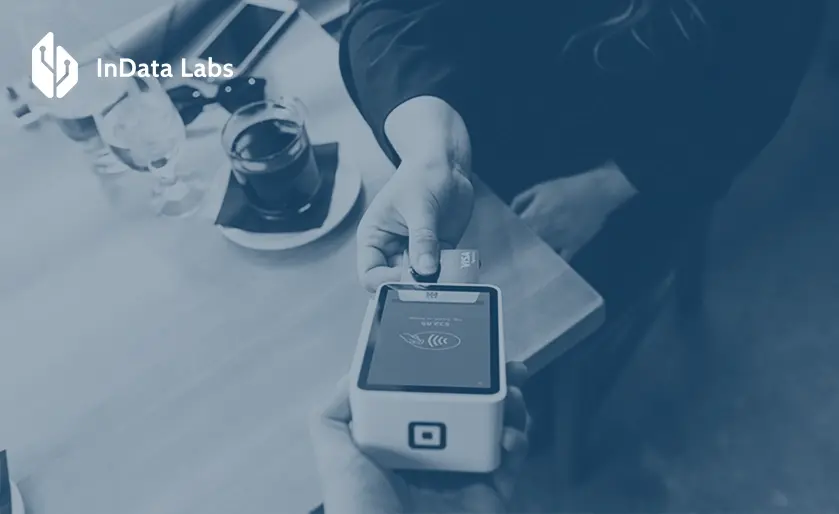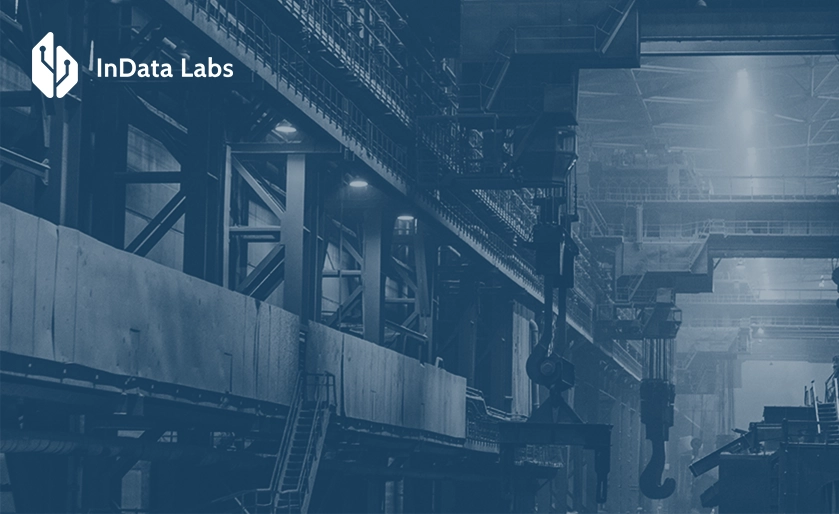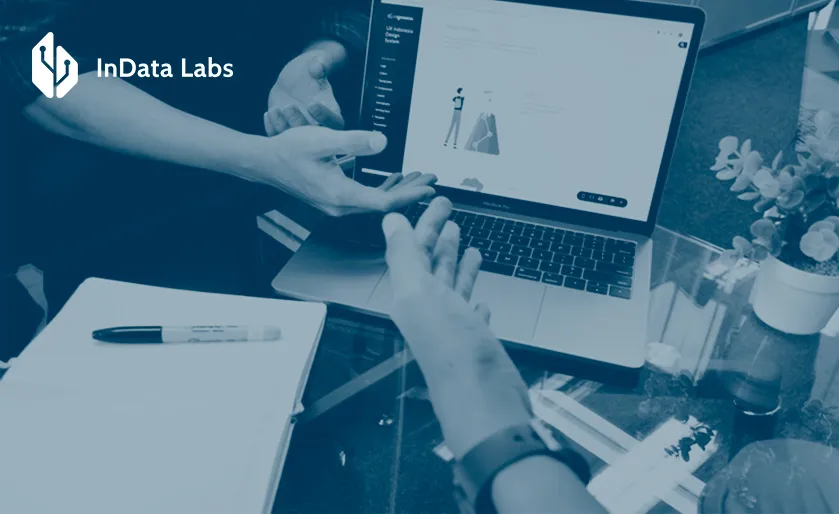In today’s emerging market, where customer expectations shift rapidly and a single disruption can stall global logistics, accurate AI demand forecasting is essential.
Legacy forecasting approaches, which rely on historical information and manual assumptions, are no longer sufficient. That’s where AI steps in. With its ability to learn patterns, it analyzes a vast amount of data and adapts instantaneously. AI is rewriting the rules of how companies predict demand. Let’s explore how it’s doing this and why the shift matters.
Why traditional demand forecasting falls short
Demand forecasting once seemed relatively straightforward. Analysts studied past sales, applied seasonal adjustments, and made educated guesses about the future. But the business landscape has changed. There are now more information channels than ever, digital conversations, market signals, weather streams, and even traffic patterns.
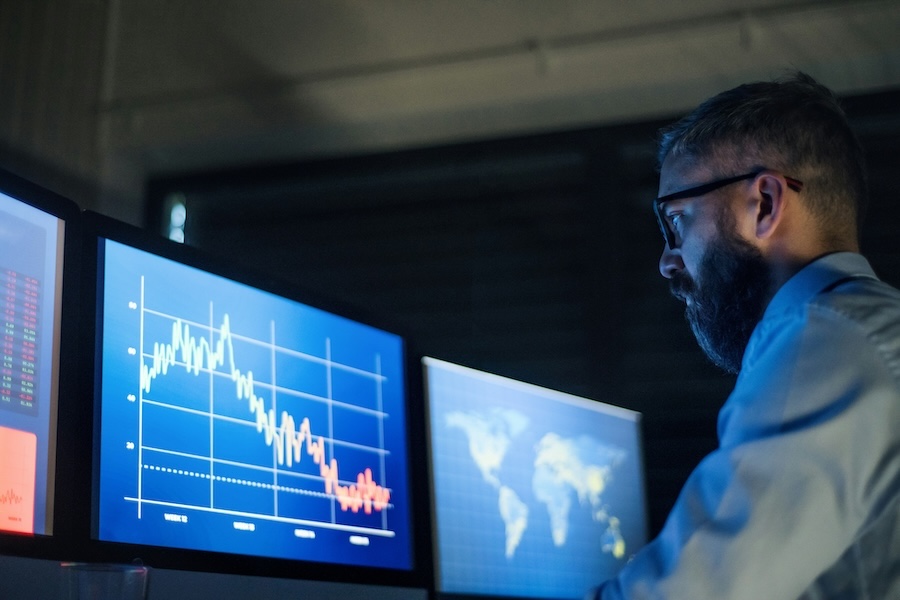
Source: Unsplash
Consumer buying habits have become unpredictable. Supply chains are more complex. And black swan events such as pandemics can render historical datasets nearly useless. In short, conventional techniques frequently miss the chance to detect weak signals or respond quickly. They’re static, linear, and slow.
AI-based demand forecasting: Advantages
Artificial intelligence doesn’t just automate processes but also transforms how decisions are made. AI in demand forecasting brings a few major advantages:
- Speed. AI can analyze thousands of variables in seconds.
- Accuracy. Machine learning models continuously improve with new data.
- Adaptability. AI will help you adapt to changing market conditions in near real-time.
- Granularity. Forecasts can be generated at the SKU-level, by region, or even by customer segment.
This means businesses can not only forecast more accurately. They can also do so faster and more often.
A glimpse into AI for demand forecasting
Imagine you’re running a national retail chain. In the past, you’d stock up for the holidays based on last year’s sales. But what if shopper preferences shift?
AI in demand forecasting goes far beyond historical numbers. It scans social media for trending products, analyzes browsing behavior, and even factors in local weather. If a cold front is on the way, it can predict higher winter coat sales in specific regions. This kind of multi-source, real-time learning is what gives AI its edge.
AI/ML demand forecasting at the core
When considering how AI is transforming demand forecasting, it’s important to know about machine learning (ML). These are algorithms that learn from data, identify hidden patterns, and make predictions without being explicitly programmed for every possible situation.

Modern AI-powered demand forecasting tools rely on these ML models to deliver faster, more accurate, and continuously improving predictions.
Deep learning for complex patterns
For especially complex datasets, companies turn to deep learning, a type of ML modeled on the human brain. Deep learning is particularly good at handling unstructured data, like images or text. Deep learning implementation can increase AI development cost, but the benefits it provides are worth such an increase.
Think about a fashion retailer trying to forecast demand for a new line of apparel. Historical data can help, sure, but what about factors like Instagram trends, influencer endorsements, or color popularity? Deep learning can scan millions of posts, analyze language sentiment, and detect which styles are gaining traction. Also, it learns to anticipate them by uncovering hidden connections in market trends and consumer behavior.
AI for real-time demand sensing
Take a global CPG (consumer packaged goods) company. When a major sporting event caused a surge in snack sales in certain regions, AI based demand forecasting picked up on the spike through POS data. It rerouted shipments automatically, preventing stockouts in high-demand zones and reducing waste elsewhere. This kind of responsiveness just isn’t possible with manual systems.
Predictive + prescriptive = Smart decisions
AI doesn’t just predict but also prescribe. Let’s say a forecast shows a drop in demand for a popular product. A traditional system would simply notify a planner. But AI goes further. It might suggest reducing ad spend, adjusting pricing, or offering a promotion to stimulate sales.
The integration of industrial predictive analytics turns forecasts into action. A multinational electronics firm uses AI to adjust pricing dynamically based on forecasted demand and competitor moves. In one case, it prevented a 10% revenue dip by proactively launching a weekend sale in underperforming markets.
Demand forecasting in retail
Retail has been one of the earliest adopters of AI forecasting technologies, and for good reason. With thousands of SKUs, unpredictable customer behavior, and seasonal fluctuations, retailers face constant pressure. Overstock results in costly markdowns, while understock means lost sales.
Timing, therefore, is everything. One well-known US department store modernized its forecasting system by integrating AI with weather data, holiday schedules, and local events. It even applied natural language processing (NLP), a branch of AI that interprets human language, to track consumer sentiment and product mentions across digital platforms.
By combining AI models with advanced NLP tools, the retailer detected early signals of changing demand. When a sudden heatwave hit the Midwest, the system accurately boosted predictions for sandals and summer clothing. Distribution centers reacted quickly, and stores were stocked in time to capture sales. No manual update could have caught that trend with the same precision and speed.
AI and E-commerce: A perfect match
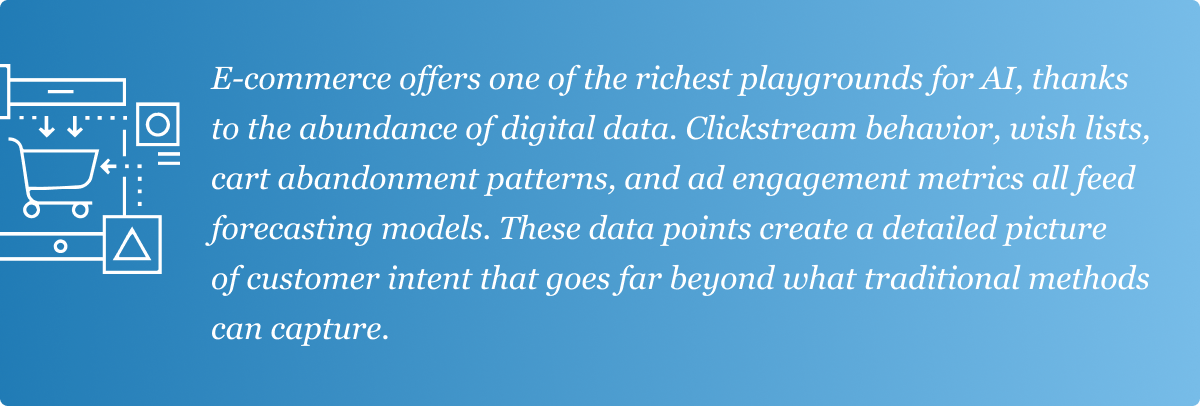
An online beauty brand, for example, uses AI demand forecasting to predict sales for specific shades of lipstick based on influencer videos and customer reviews.
By integrating natural language processing services, the brand is able to analyze text from thousands of product reviews, social media posts, and influencer content. This allows the system to detect subtle shifts in sentiment, such as a sudden surge in demand for coral tones after a popular YouTuber showcases them.
For E-commerce companies, the value lies not only in detecting what’s trending but also in reacting to it before competitors.
AI-powered forecasting ensures warehouses are stocked appropriately, marketing campaigns are timed with precision, and product launches align with actual consumer interest. In a space where trends can explode overnight, the combination of AI and NLP provides the agility needed to capture sales opportunities and strengthen customer loyalty.
Inventory optimization through AI forecasts
Forecasting is only the starting point. True business impact comes when insights are applied to inventory management.
By integrating AI demand planning into replenishment models, companies can optimize where to place stock, when to reorder, and how to balance safety stock with service levels. This is especially critical for Fast-Moving Consumer Goods (FMCG) companies, where shelf life and speed directly impact profitability. Leaner operations mean lower storage costs and fewer costly markdowns without compromising product availability.
Enterprises in industries such as FMCG also benefit from the ability to simulate different stocking scenarios and adjust to market changes in real time. Whether it’s a sudden surge in demand for seasonal products or a supply chain disruption, AI ensures inventory decisions are both proactive and precise. The result is a smarter balance between efficiency and customer satisfaction, turning inventory into a competitive advantage rather than a liability.
Collaborative forecasting gets smarter
Precise forecasting often depends on collaboration across advertising, operations, and finance. Each team brings unique perspectives that influence demand patterns.
Modern AI systems enable this collaboration by merging subjective inputs. The result is improved results across the board. In fact, one AI demand forecasting case study showed how, when marketing promotions were layered into the baseline forecast, precise improved significantly compared to relying on sales figures alone.

Source: Unsplash
By continuously learning from overrides and team contributions, AI tools fine-tune models over time, driving measurable improvements. Firms that adopt this approach report higher AI demand forecasting accuracy, stronger alignment across departments, and greater confidence in business decisions.
As collaboration becomes smarter and more transparent, organizations move closer to a unified planning framework where AI insights continuously process enhance, and refine forecasts to minimize bias while maximizing reliability.
Reducing waste and carbon footprint
Sustainability is becoming a top priority across industries, and enhanced forecasting plays a key part in cutting down environmental impact. Overproduction leads to excess inventory, higher energy use, and increased emissions from emergency transportation.

Retailers, manufacturers, and even food suppliers are already seeing the benefits of AI. Through instant adjustments to demand signals, firms avoid unnecessary shipments, cut spoilage, and optimize resource use.
These improvements are often supported by robust Big data development, which ensures that vast data collections are processed efficiently and transformed into actionable insights. This not only supports sustainability initiatives but also drives measurable savings. In today’s economy, reducing waste with AI-powered demand forecasting is both a business advantage and a step toward meeting global climate goals.
Manufacturing demand forecasting AI tools
Manufacturers face complex challenges in balancing production schedules, supply availability, and fluctuating customer demand. Traditional spreadsheets and static models often fail to keep up with today’s volatility.
By adopting artificial intelligence demand forecasting, factories can process vast data streams, from raw material supply to distributor orders, to create highly accurate predictions.
Many organizations partner with an experienced AI company to build and scale these forecasting systems, ensuring they are customized to specific production and supply chain needs. This allows manufacturers to optimize machine utilization, reduce costly downtime, and align production with real market needs.
The next wave of innovation is demand forecasting generative AI, which goes beyond prediction to simulate multiple future scenarios.
Instead of relying solely on past sales data, generative models can anticipate the impact of policy changes, shifts in consumer behavior, or supplier disruptions. This empowers manufacturers to plan proactively, avoid bottlenecks, and maintain resilience even during market uncertainty. Together, these AI tools turn demand forecasting into a core driver of competitiveness in modern manufacturing.
Predictive maintenance meets demand forecasting
Manufacturers are increasingly combining equipment monitoring with demand forecasting to improve efficiency. By integrating predictive maintenance data into forecasts, companies can anticipate machine downtime, align it with periods of low demand, and avoid costly production delays.
Modern AI-powered demand planning software allows organizations to merge operational insights with market shifts, ensuring production schedules remain synchronized with customer needs and improving overall forecasting accuracy. To learn more, please watch a short video:
This approach is evolving into automated demand planning with AI-driven insights, where systems not only predict potential failures but also adjust supply chain management and inventory strategies accordingly.
With advanced AI demand planning software, businesses gain the ability to plan proactively, reduce excess inventory, and maximize machine utilizationall while minimizing disruptions. The result is a leaner, smarter operation that balances production capacity with real-time demand signals.
AI demand planning in the healthcare sector
Healthcare providers and pharmaceutical companies operate in environments where demand can shift rapidly due to seasonal illnesses, policy changes, or unexpected outbreaks. Traditional methods often fall short when speed and accuracy are critical.
By applying artificial intelligence for demand forecasting, hospitals can predict patient intake, medication requirements, and equipment needs with far greater precision. This ensures resources are allocated efficiently and patient care remains uninterrupted, even in times of crisis.
Modern AI for demand planning also supports large-scale pharmaceutical distribution, helping organizations anticipate regional needs for drugs, vaccines, or medical devices.

The result is a more resilient healthcare infrastructure that saves costs, reduces waste, and, most importantly, safeguards patient outcomes.
Pharmaceuticals: From R&D to distribution
In pharma, drug demand forecasting AI affects not just stock availability, but research and development investments too. Let’s say a company is developing a treatment for seasonal allergies. AI analyzes historical sales, market growth, climate patterns, and consumer feedback across multiple regions.
This helps decide how much to invest in trials, when to launch, and how to distribute effectively. It even factors in competitor pipelines and regulatory changes. For drugs with limited shelf lives, like vaccines or injectables, AI ensures the right doses reach the right locations at the right time, minimizing waste and maximizing health impact.
Automotive industry: Smarter assembly and parts logistics
The automotive sector faces unique challenges in balancing thousands of components, global suppliers, and ever-changing consumer preferences. A slight shift in demand for specific models or configurations can disrupt entire assembly schedules.
By applying artificial intelligence in demand forecasting, automakers can better align production with customer needs, anticipate supply chain risks, and optimize delivery flows. This precision reduces excess inventory while ensuring dealerships have the right vehicles and parts available.

Source: Unsplash
Beyond predictive models, generative AI demand forecasting is emerging as a powerful tool for scenario planning in the automotive space. Manufacturers can simulate the impact of fuel price changes, policy shifts, or new EV adoption trends and adjust strategies before disruptions occur.
Some companies are even exploring an AI energy demand forecast to balance the rising electricity needs of EV production and charging infrastructure. Together, these innovations make demand planning smarter, faster, and more resilient in an industry where timing is everything.
Tackling forecasting challenges with AI
Adopting advanced forecasting technologies often comes with hurdles such as poor data quality, change management, and resistance to new processes. Traditional methods struggle when data is incomplete or inconsistent, but demand forecasting using AI can overcome these gaps by cleaning, enriching, and learning from multiple sources in real time. This allows businesses to generate more reliable insights even when historical patterns are disrupted.
Emerging innovations like generative AI for demand forecasting take things further by simulating scenarios and offering prescriptive recommendations in natural language. Instead of relying solely on static spreadsheets, companies can now ask the system “what-if” questions and receive actionable strategies instantly.
By combining these capabilities, an AI demand forecast becomes not just more accurate, but also more transparent, adaptive, and valuable for decision-making across the entire supply chain.
Human + AI: Not a replacement, but a partnership
One of the biggest misconceptions is that AI will replace human planners. In reality, the best results come from collaboration. Humans bring context, intuition, and market knowledge, while AI handles complexity, scale, and speed.
For example, AI-driven demand forecasting for seasonal and promotional products can quickly detect short-lived trends and quantify their impact, while planners validate results with insights about local markets or upcoming campaigns. Together, they create a cycle of continuous improvement.

A well-implemented AI demand forecasting solution turns planners into strategists, freeing them from manual data crunching so they can focus on higher-value decisions that drive profitability and customer satisfaction.
Forecasting during uncertainty: AI’s real Test
Disruptions such as pandemics, supply chain shocks, or sudden shifts in consumer behavior expose the limits of traditional forecasting methods. Historical data often becomes irrelevant when markets change overnight.
In contrast, AI-driven demand forecasting adapts by retraining on shorter time windows, integrating real-time signals, and recalibrating predictions quickly. This agility helps companies respond to volatility with far greater speed and can enhance the accuracy of demand forecasts compared to manual approaches.
Modern demand forecasting AI models make it possible to simulate different scenarios, from raw material shortages to unexpected surges in demand.
When combined with demand planning AI, these models empower organizations to align production, logistics, and sales strategies even in uncertain conditions. The result is not only faster recovery during crises but also more resilient operations that can withstand future disruptions.
Real-time forecasting at scale
Speed is everything in modern forecasting. And AI streamlines real-time forecasting, making it not only possible but also scalable.
An online grocery platform uses AI to forecast demand for over 100,000 SKUs across 60 regions, updating forecasts every two hours. The model factors in order data, delivery slots, weather, and even traffic congestion. This allows the company to adjust warehouse staffing, delivery logistics, and inventory stocking on the fly. It’s a level of agility that wouldn’t be possible without machine learning at the core.

Source: Unsplash
The growing use of AI and machine learning in demand forecasting enables organizations to move beyond static models and embrace continuous adaptation.
Companies are also beginning to experiment with generative AI demand planning, where teams can simulate scenarios, test assumptions, and receive prescriptive recommendations in natural language. Together, these technologies elevate forecasting from a back-office task to a strategic driver of resilience and growth.
Integrating AI into existing systems
You don’t have to rip out your existing systems to benefit from AI. Many organizations integrate AI forecasting models with their current ERP, WMS, or BI tools. APIs and cloud-based platforms make it relatively simple to plug in AI modules that enhance rather than replace.
This approach makes demand forecasting with AI accessible even to companies with legacy infrastructure. Instead of a disruptive overhaul, AI in demand planning adds a smart layer of prediction and automation on top of existing workflows. The result is faster predictive analytics insights, smoother collaboration across departments, and more confident decision-making, all without sacrificing past technology investments.
AI forecasting in B2B and wholesale
AI’s impact isn’t limited to consumer-facing businesses. In B2B settings, where order cycles are long and customer relationships complex, AI can still uncover patterns human analysts miss.
For many B2B companies, implementing AI demand forecasting software has become a way to anticipate client needs more precisely, reduce churn, and optimize stock levels across regional warehouses. Unlike static spreadsheets, these systems continuously learn from purchase history, industry cycles, and supplier constraints, giving decision-makers more reliable insights.
When paired with predictive analytics for sales forecasting, these solutions provide an even clearer view of customer behavior and revenue potential. By combining artificial intelligence and demand planning, businesses can balance efficiency with customer satisfaction, ensuring products are available when and where they’re needed most.
Moving toward intelligent demand planning
The long-term vision for many companies is autonomous supply chain planning. AI isn’t just used to predict’s used to decide and act. In this model, AI systems forecast demand, trigger procurement, schedule production, and coordinate logistics without human intervention unless exceptions arise.
While we’re not fully there yet, some companies are getting close. A consumer electronics brand uses AI to plan production and distribution for new product launches.

Source: Unsplash
By leveraging AI-powered demand forecasting, the company can anticipate demand shifts across regions and automatically align production schedules with expected sales volumes.
This integration of demand planning and AI ensures fewer bottlenecks, more efficient inventory allocation, and faster reaction to unexpected changes in consumer behavior. As adoption grows, these autonomous processes will gradually move from pilot projects to industry standards.
Measuring the ROI of AI in demand forecasting
Every transformation needs justification, and in business, that means return on investment. For demand forecasting AI, ROI often shows up in multiple areas:
- Improved accuracy: Many companies report 20–50% better forecast accuracy within months of implementation.
- Lower stockouts and overstocks: These lead to better customer satisfaction and lower costs.
- Reduced waste: Especially critical in industries with perishables or expiration-sensitive products.
- Faster response to changes: When markets shift, AI-equipped teams adjust in days, not weeks.
Improved collaboration: With centralized, trusted data analysis and intelligent models, different departments make aligned decisions.
Organizations that implement AI-powered demand forecasting often see a measurable financial impact within the first year. Beyond improved prediction, companies gain operational advantages from AI-based demand forecasting and inventory management, such as optimized replenishment cycles, smarter warehouse allocation, and leaner safety stock strategies.
Together, these benefits translate into lower working capital requirements and higher service levels, clear proof that the technology drives both efficiency and growth.
AI forecasting + Generative AI: A new frontier
The next big shift in forecasting is the rise of generative AI in demand forecasting. Unlike traditional models that simply predict based on past patterns, generative AI can simulate scenarios, explain assumptions, and provide recommendations in natural language.
Planners no longer need to interpret only graphs or tables. They can ask questions like “What happens if gas prices rise 15%?” and receive clear, actionable guidance. This level of interactivity makes forecasting more transparent, collaborative, and accessible across departments.
Forward-looking companies are already embedding AI demand forecasting software solutions with generative capabilities into their supply chain ecosystems. These tools combine historical data with real-time signals and predictive modeling, then extend insights with simulations and prescriptive recommendations. Many organizations also leverage professional predictive analytics services to fine-tune these models and integrate them into existing systems.
By uniting strategic planning with execution, AI-driven demand forecasting evolves from a technical function into a strategic business enabler, helping organizations prepare for uncertainty and gain a competitive advantage.
Demand forecasting through graphs: Understanding relationships
Another emerging innovation is graph-based AI. While a typical AI model for demand forecasting views data in rows and columns, graph AI sees it as a network of relationships. Think of products, customers, suppliers, and locations all connected in dynamic webs. For demand forecasting, this means understanding:
- How product sales influence each other
- How delays from a supplier ripple through demand for end-products
- How customer buying behaviors cluster and evolve over time.
One electronics company used graph AI to identify relationships between accessories and main products.
When demand rose for smartwatches, the AI automatically predicted demand and an uptick in charger sales and adjusted orders accordingly. It’s like giving your forecast model peripheral vision. The entrepreneurs who think about such AI software development will get a competitive advantage.
By adding these relationship insights, companies achieve an AI power demand forecast that goes beyond numbers, capturing hidden dependencies and creating a more resilient, future-ready planning process.
How to get started with AI forecasting
For companies new to AI, the idea of deploying machine learning can feel overwhelming. But it doesn’t have to be. Here’s a roadmap many successful adopters follow:
-
Audit your data
Before diving in, make sure your data is clean, consistent, and accessible. Historical sales, pricing, weather, promotions, and supply data are all valuable assets.
-
Start small
Pick one region, product category, or use case. Focus on a contained pilot project where results can be measured quickly.
-
Choose the right technology
There are AI forecasting platforms purpose-built for solutions in retail and E-commerce, manufacturing, healthcare, and more. You don’t always need to build models from scratch. Off-the-shelf solutions can deliver fast wins.
-
Involve cross-functional teams
The AI forecasting process isn’t just a job for data scientists. Involve supply chain, marketing, finance, and IT early on. The more inputs, the stronger your model.
-
Track KPIs from day one
Accuracy improvement, inventory levels turnover, service level adherence, track them before and after AI deployment to prove value.
-
Scale gradually
Once the pilot succeeds, expand to other areas. Integrate with upstream and downstream systems to build a more autonomous flow. Companies that treat AI adoption as an evolution, not a one-time installation, are more likely to achieve the best long-term success.
What this transformation means for the future
Demand forecasting used to be a guesswork-heavy function, based largely on gut feelings and spreadsheets. AI has turned it into a science. We’re moving toward a future where:
- Forecasts are always on, real-time, and auto-correcting
- Decision-making is augmented by intelligent systems, not bottlenecked by them
- Demand planning is no longer a silobut part of a holistic, responsive, and agile business operation.
In the next 5–10 years, firms that continue to depend on outdated approaches will find themselves outpaced. The interconnection of AI and demand forecasting will be a requirement to remain competitive. Just like Excel was once a breakthrough for planners, AI has now become the new standard.
The convergence of AI and demand forecasting is reshaping value chains into predictive, adaptive frameworks. Intelligent demand planning enables companies to not only respond to shifts in real time but also simulate future scenarios and proactively align resources. Businesses that embrace these tools can turn volatility into opportunity, while those that delay risk falling behind in both effectiveness and customer experience.
Wrapping up: The forecast for forecasting
AI is transforming demand forecasting from a reactive function to a proactive engine of organizational growth. Whether you’re selling clothes, cars, medicine, or cloud services, knowing what buyers expect and when is essential. AI-powered demand forecasting tools deliver this with confidence, precision, and speed. From machine learning to generative models and graph networks, the toolkit is expanding rapidly.
AI for demand forecasting is becoming a core capability for companies that want to stay competitive. This transformation is about something simple: making smarter decisions today so you’re ready for whatever comes tomorrow.
